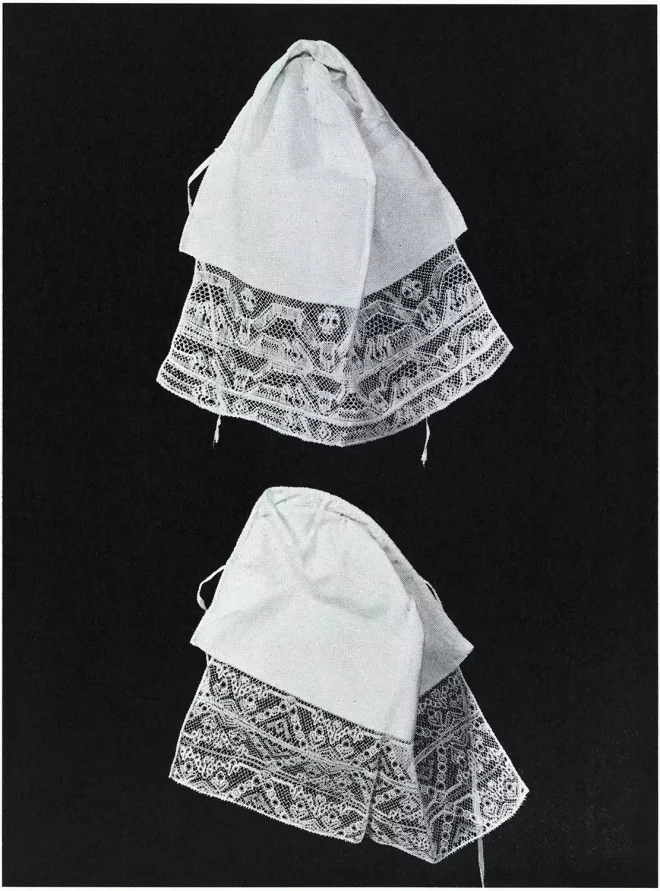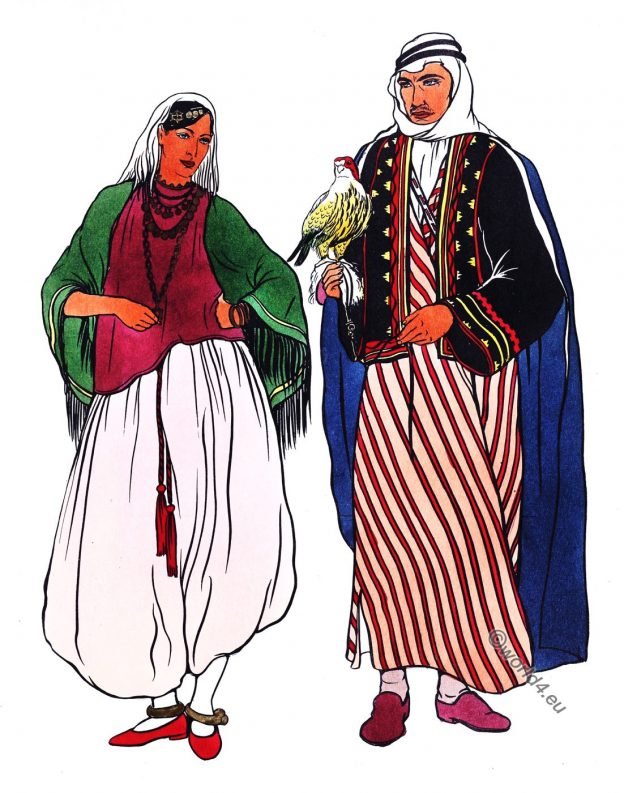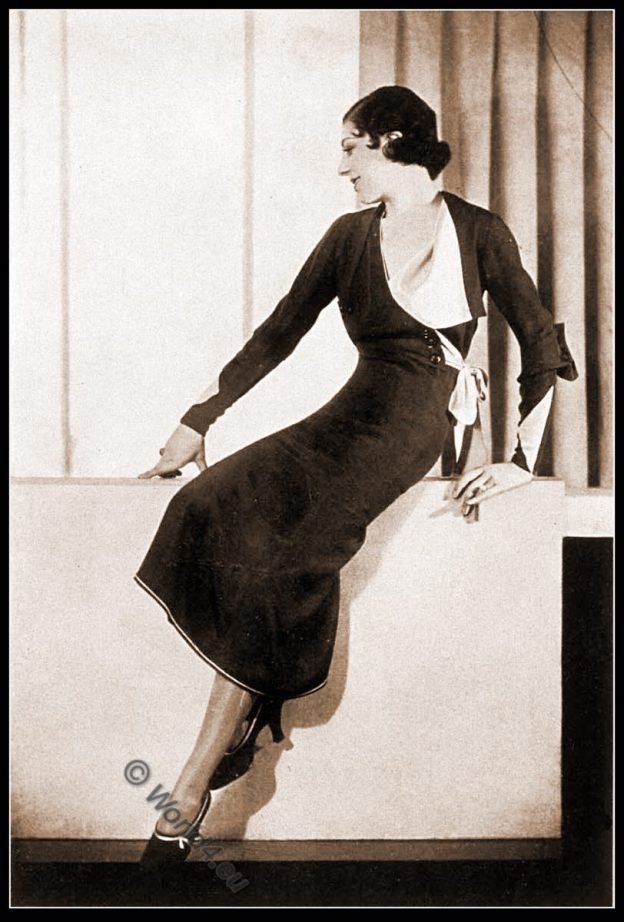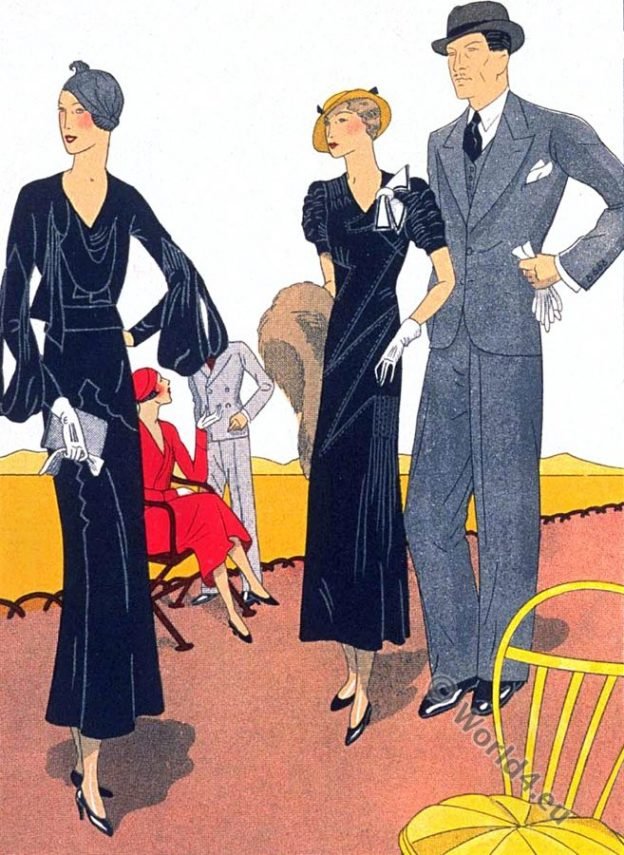Women’s head-dress of linen. Edged in front with white lace. — From 1750—1850.
Category: 30s
Paul Poiret. Elégante robe Rêve d’Or. Petit manteau Monavana.
Les Créations Parisiennes. La Mode est un Art. Haute Couture by PAUL POIRET 1930.
The dress of the Arabs. Affluent class. Pictorial work.
The name Arab originally was reserved for the nomad tribes east of Palestine and in the Syro-Arabian desert, but today it is generally used for most of the surviving Semitic peoples who, in addition to living in Arabia, are to be found in Mesopotamia, North Africa, the western shores of the Red Sea, and the eastern shores of the Persian Gulf.
Agnès-Drecoll. Robe d’après-midi en crêpe de Chine noir.
Agnès-Drecoll.
Ensembles of Bernard & Cie and Ardanse.
Ensembles of Bernard & Cie and Ardanse. Art-Goût-Beauté: feuillets de l’élégance féminine.
Création Chanel. Dress worn by Princess Dimitri.
Création Chanel. Dress for afternoon-evening worn by Princess Dimitri Romanov, Princess of Russia.
African tribe of Yetsang. Hairstyle. Southern Cameroons.
Hairstyle of a girl from the African tribe of Yetsang (Southern Cameroons).
Bodyguard of Sultan Sanda of Bornu, Dikwa Emirate Nigeria.
Bodyguard of Sultan Sanda of Bornu, Dikwa Emirate Nigeria 1930s. Gallery: The dark continent; Africa, the landscape and the people by Hugo Adolf Bernatzik
Woman of the African tribe of Wodaabe Bororo, 1930s.
Wodaabe Bororo woman, Banyo, French Cameroons, Mandated Territory. The Wodaabe Bororo belong to the ethnic group of the Fulani. They are one of the last tribes of Africa, who have kept… Read More
Chief in ceremonial dress, Gold Coast, Ghana.
Chief in ceremonial dress, Gold Coast, Ghana 1930s. The British colony Gold Coast (“Gold Coast Colony”) in West Africa existed from 1878 to 1958 and was part of British West… Read More










